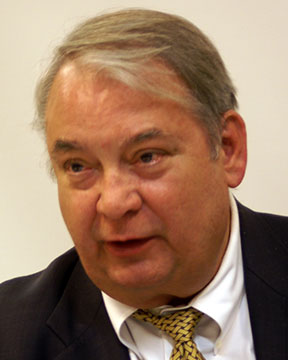ORALS
SESSION: ManufacturingTuePM1-R4
Biomechanics / Biomedical engineering | Mamalis International Symposium on Advanced Manufacturing of Advanced Materials and Structures with Sustainable Industrial Applications |
| Tue Nov, 6 2018 / Room: Sao Conrado (50/2nd) | |
| Session Chairs: Tetiana Prikhna; Jeremy Ramsden; Session Monitor: TBA |
15:15: [ManufacturingTuePM108]
Identification of a Peptide that can Enhance Genotoxic Sensitivity Through Cellular Redistribution of Chk1 Protein Kwang Seok
Kim1 ;
Sang Jun
Park1 ;
Chun-ho
Kim1 ;
1KIRAMS, Seoul, South Korea;
Paper Id: 414
[Abstract] Chk1 protein has been a target in the detectable genotoxic sensitivity of cells and tissues, and a major focus of pharmaceutical development to enhance sensitivity of tumor cells to chemo- and radiotherapy [1]. To take advantage of such biological effects, we identified a specific Chk1-binding 12-mer peptide from screening of phage display library and characterized the peptide in terms of cellular cytotoxicity, and effect on Chk1 activity, and sensitivity to genotoxic agents [2]. Interestingly, polyarginine-mediated internalization of the peptide redistributed nuclear Chk1 with prominent decrease in the nucleus in the absence of DNA damage. Treatment of HeLa cervical cancer cells or NCI-H460 lung cancer cells with the peptide significantly enhanced radiation sensitivity following ionizing radiation (IR). Moreover, IR-induced Chk1 destabilization was aggravated by Chk1 peptide treatment. The approach using the specific Chk1 peptide may facilitate a mechanistic understanding and potential modulation of Chk1 activities and provide a novel rationale for development of specific Chk1-targeting agents [3-4].
References:
1. Zhang Y, Hunter T. Roles of Chk1 in cell biology and cancer therapy. Int J Cancer. 2014;134(5):1013-23
2. KS Kim, KJ Choi, SW Bae. A novel Chk1-binding peptide that can enhance genotoxic sensitivity through cellular redistribution of nuclear Chk1. 2016. Int J Mol Med 38:1490-1498
3. Saladin A, Rey J, Thevenet P, Zacharias M, Moroy G, Tuffery P. PEP-SiteFinder: a tool for the blind identification of peptide binding sites on protein surfaces. Nucleic Acids Res. 2014;42:W221-6.
4. Kawabe T. G2 checkpoint abrogators as anticancer drugs. Mol Cancer Ther 2004; 3:513-9.
15:40 Break



















